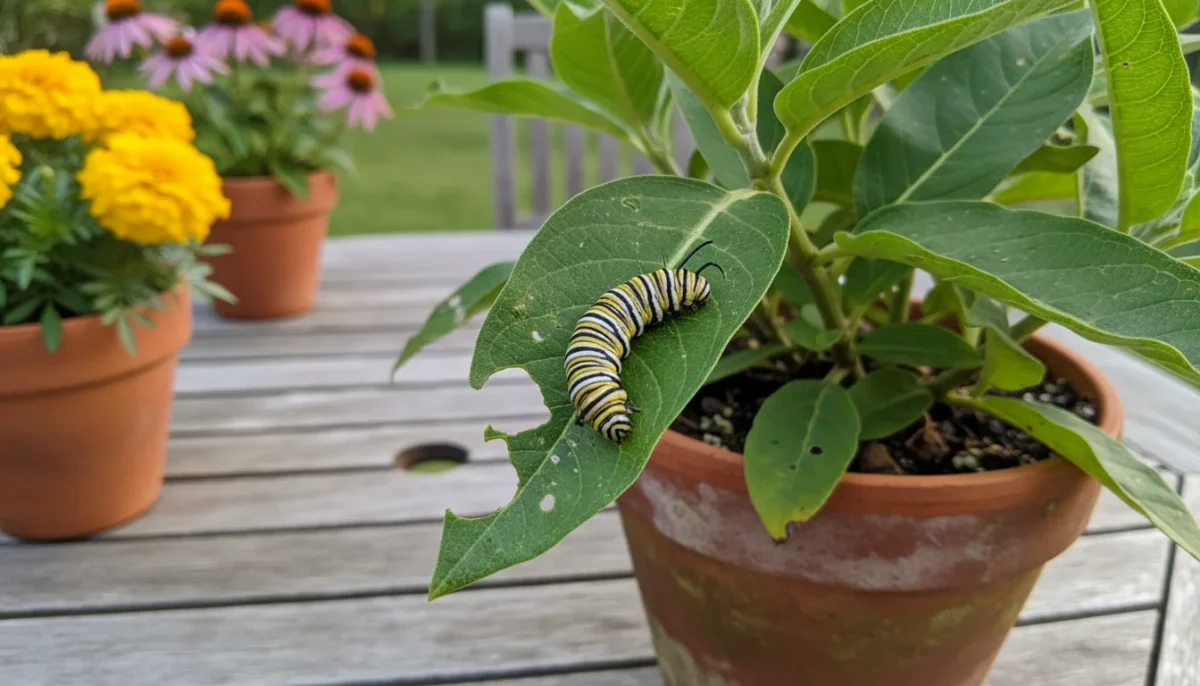Envision a tranquil corner of your home, bustling with the delicate dance of butterflies. This is not a distant dream reserved for sprawling gardens. Even a small space, be it a balcony, patio, or a compact yard, offers incredible potential to become a vibrant haven for these vital pollinators. You hold the power to create a thriving ecosystem, supporting local biodiversity directly from your home.
Butterflies bring beauty, life, and an essential service to our environment: pollination. By strategically selecting the right butterfly plants and implementing sustainable gardening practices, you contribute directly to their survival while enhancing the natural charm of your outdoor area. This guide empowers you with practical, actionable steps to cultivate a truly pollinator friendly garden, regardless of its size. We focus on low-waste habits, water-wise methods, and safe pest management, ensuring your small space gardening efforts create lasting positive impact.
For research-based sustainable gardening guidance, see
Cornell Waste Management Institute — Composting,
UF/IFAS Gardening Solutions — Florida-Friendly Landscaping,
The Xerces Society — Pollinator Conservation, and
Pollinator Partnership — Garden for Pollinators.
Disclaimer: This article is for informational purposes only and is not a substitute for professional advice. Check local regulations before installing rain capture, using greywater, or composting food scraps outdoors.
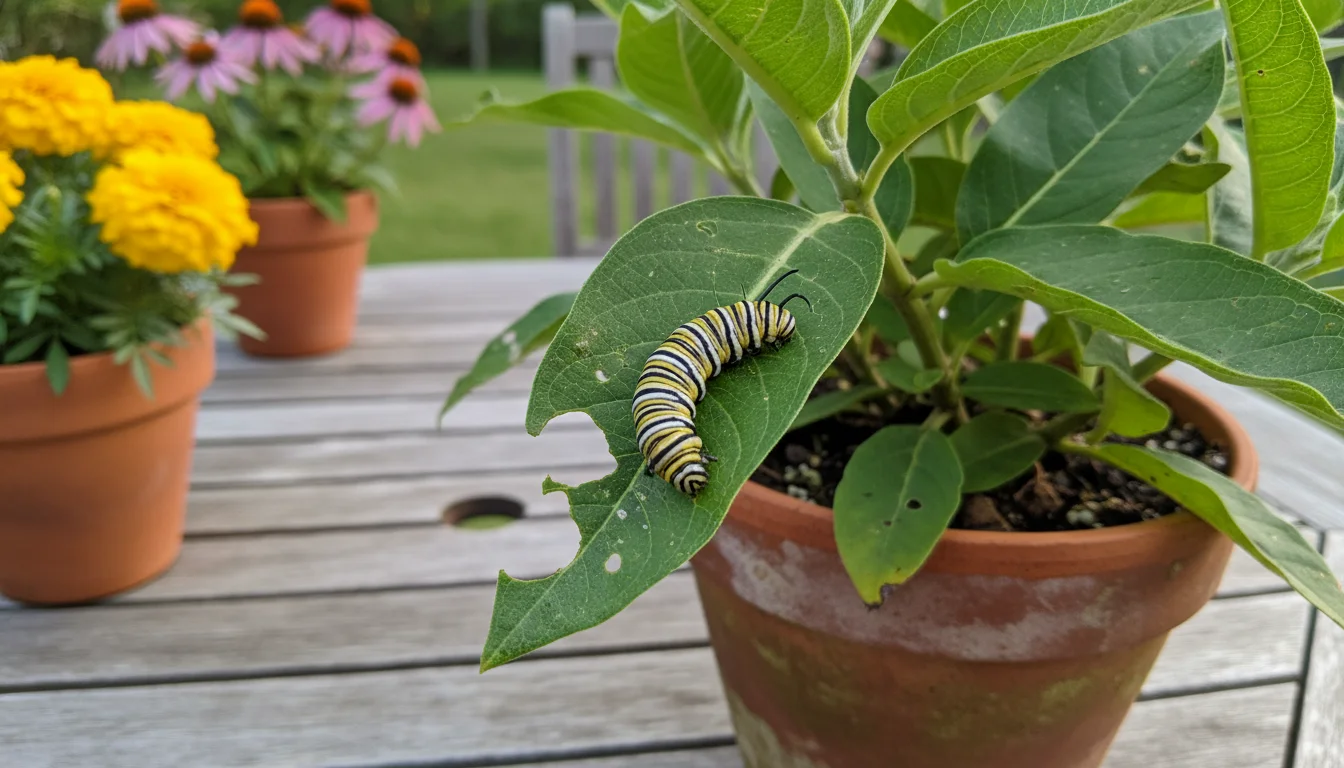
Understanding Butterfly Needs: More Than Just Flowers
To successfully attract and support butterflies in your small space garden, you must understand their complete lifecycle requirements. Butterflies do not simply visit flowers; they live complex lives that involve distinct stages, each with specific needs. Your garden, however compact, can provide for many of these needs.
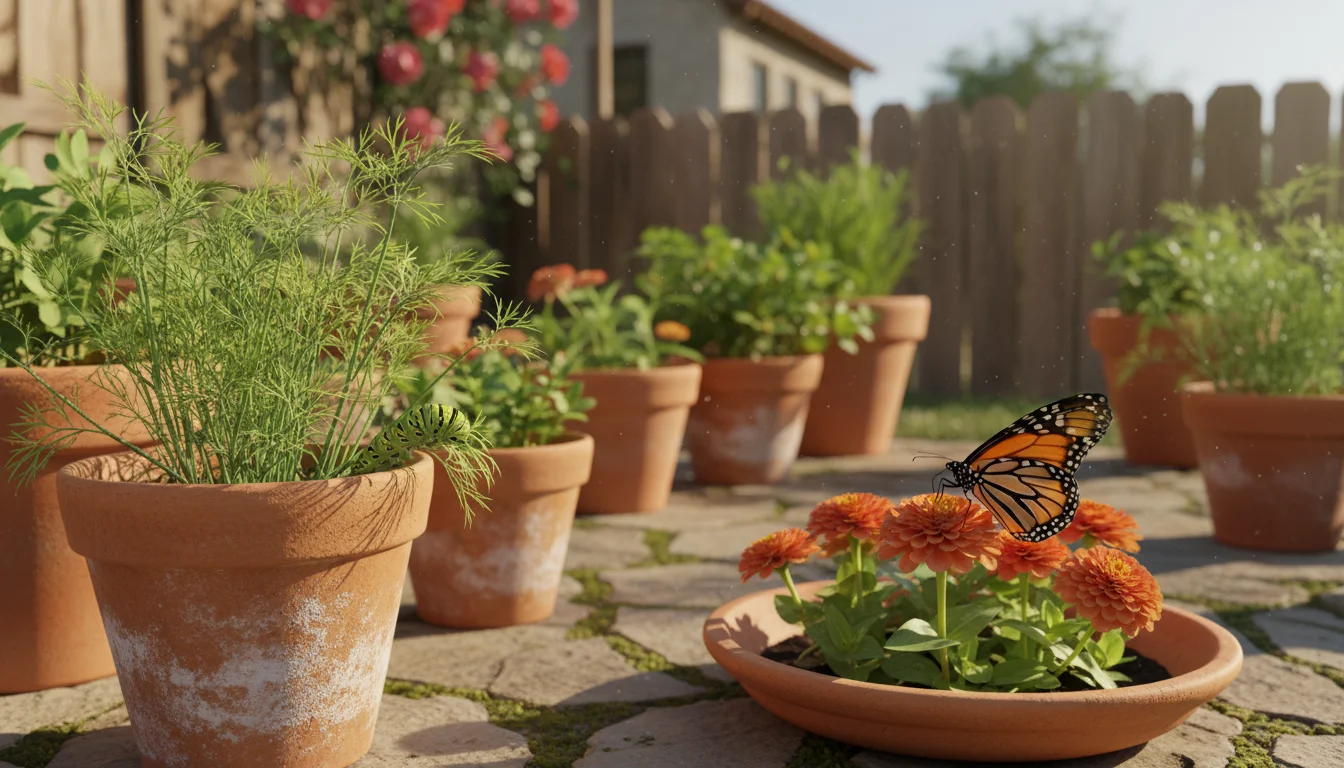
The Butterfly Life Cycle: A Brief Overview
A butterfly’s life consists of four fascinating stages: egg, larva (caterpillar), pupa (chrysalis), and adult. Each stage depends on different resources. Adult butterflies require nectar for energy, but caterpillars, the larval stage, need specific “host plants” for food. Without these host plants, butterflies cannot complete their life cycle, regardless of how many nectar-rich flowers you provide for the adults.
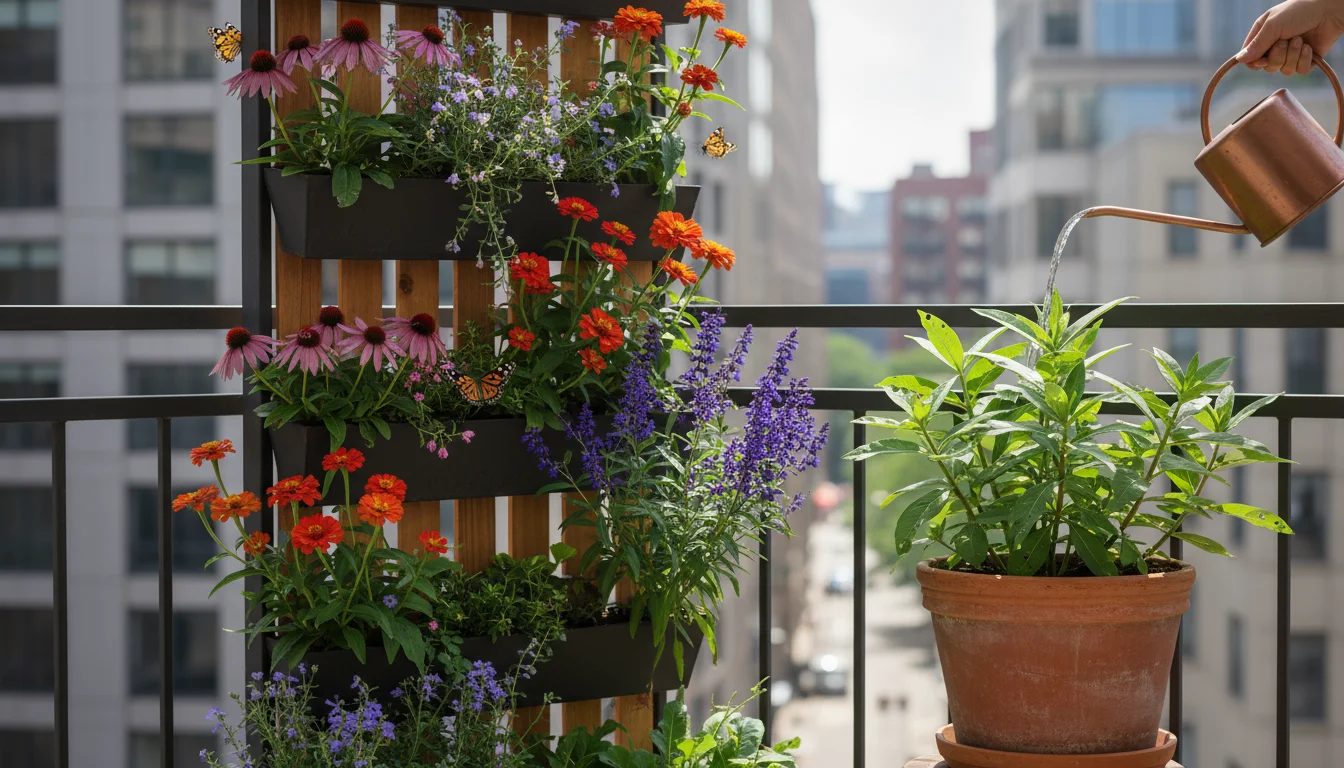
Key Elements for a Butterfly-Friendly Habitat
- Nectar Plants: These are the fuel stations for adult butterflies. They provide essential sugars and nutrients, giving butterflies the energy to fly, mate, and lay eggs. Look for plants with simple, open flowers, as these allow easy access to nectar. Clusters of flowers also make a more efficient food source.
- Host Plants: These are the nurseries for caterpillars. Each butterfly species often has a very specific set of plants its caterpillars can eat. Monarch caterpillars, for example, feed exclusively on milkweed. Providing these plants ensures the next generation of butterflies can thrive. Embracing a few nibbled leaves shows you are successfully supporting the butterfly lifecycle.
- Water Source: Butterflies need water, but they do not drink from open ponds or bird baths. Instead, they “puddle.” This means they extract moisture and minerals from damp soil, mud, or shallow puddles. You can create a simple puddling station with a shallow dish, sand, and water.
- Shelter and Sun: Butterflies are cold-blooded and need warmth to fly. Sunny spots in your garden are crucial. They also need shelter from strong winds and predators, which dense foliage or small shrubs can provide. Avoid entirely manicured spaces; a little wildness helps them hide.
By considering these four elements, you move beyond simply planting pretty flowers to creating a true ecosystem that supports butterflies from egg to adult.
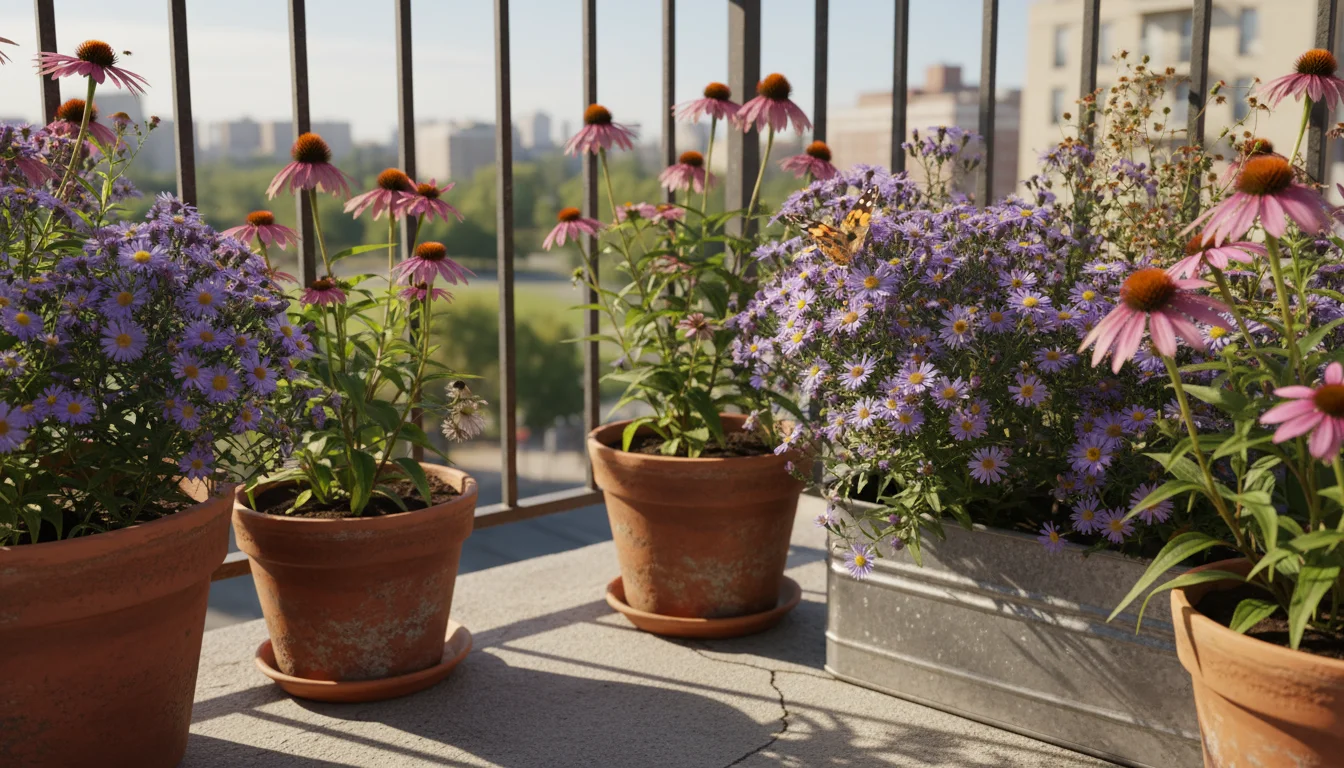
Choosing the Right Butterfly Plants: Nectar Sources for Adults
Selecting the correct butterfly plants is paramount for attracting these winged beauties. Prioritize native plants whenever possible, as they are best adapted to your local climate and provide the most familiar food sources for native butterfly species. Native plants often require less water and maintenance once established, making them ideal for a low-maintenance, pollinator friendly garden.
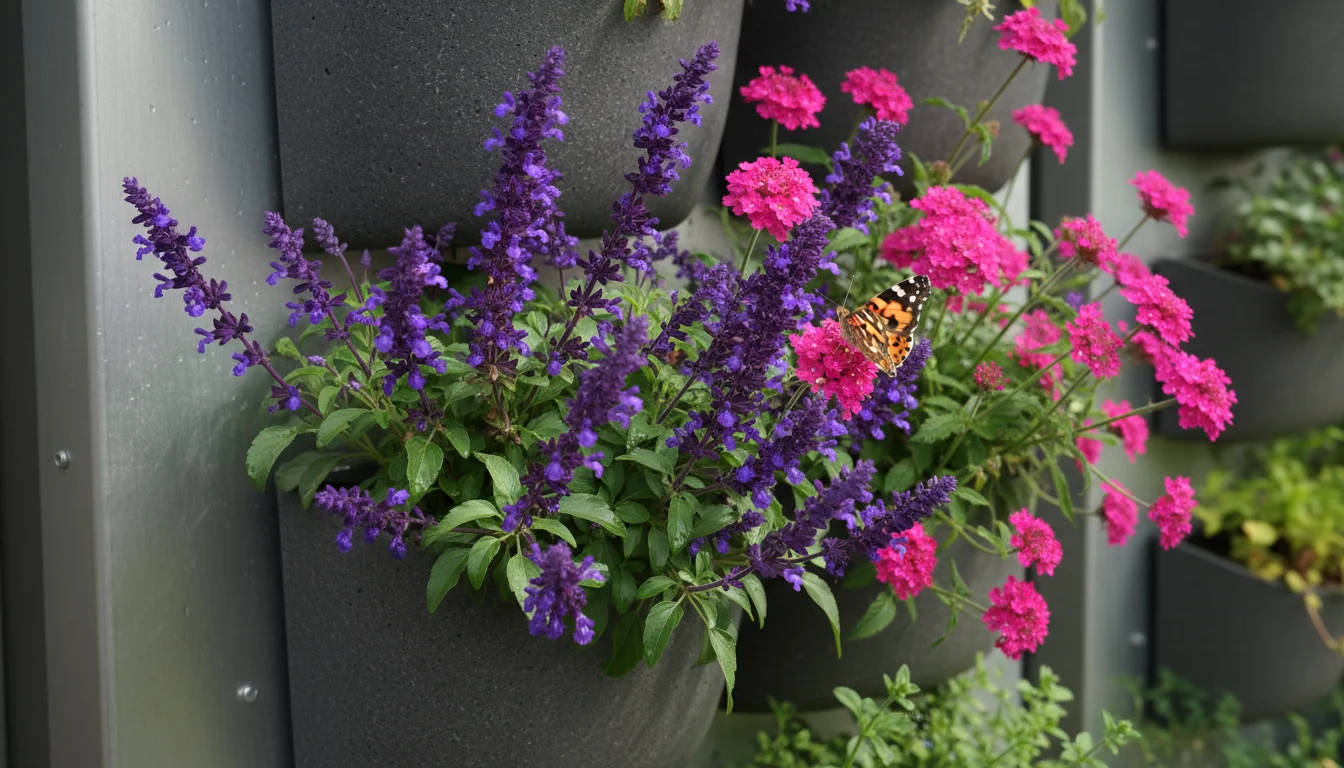
Qualities of Excellent Nectar Plants
- Long Bloom Period: Choose plants that bloom for an extended time or select a variety of plants with staggered bloom times to provide continuous nectar throughout the growing season. This ensures butterflies always find food.
- Flower Shape and Color: Butterflies prefer flat-topped clusters of flowers, or tubular flowers, which provide a landing pad and easy access to nectar. Bright colors like purple, pink, yellow, and red attract them most effectively.
- No Pesticides: Ensure all plants you purchase or grow are free from systemic pesticides, which can harm or kill butterflies and other beneficial insects. Inquire with your nursery about their growing practices.
- Grouping: Plant flowers in clusters or drifts rather than single specimens. Large patches of color are more visible to butterflies from a distance, making your garden a more attractive target.
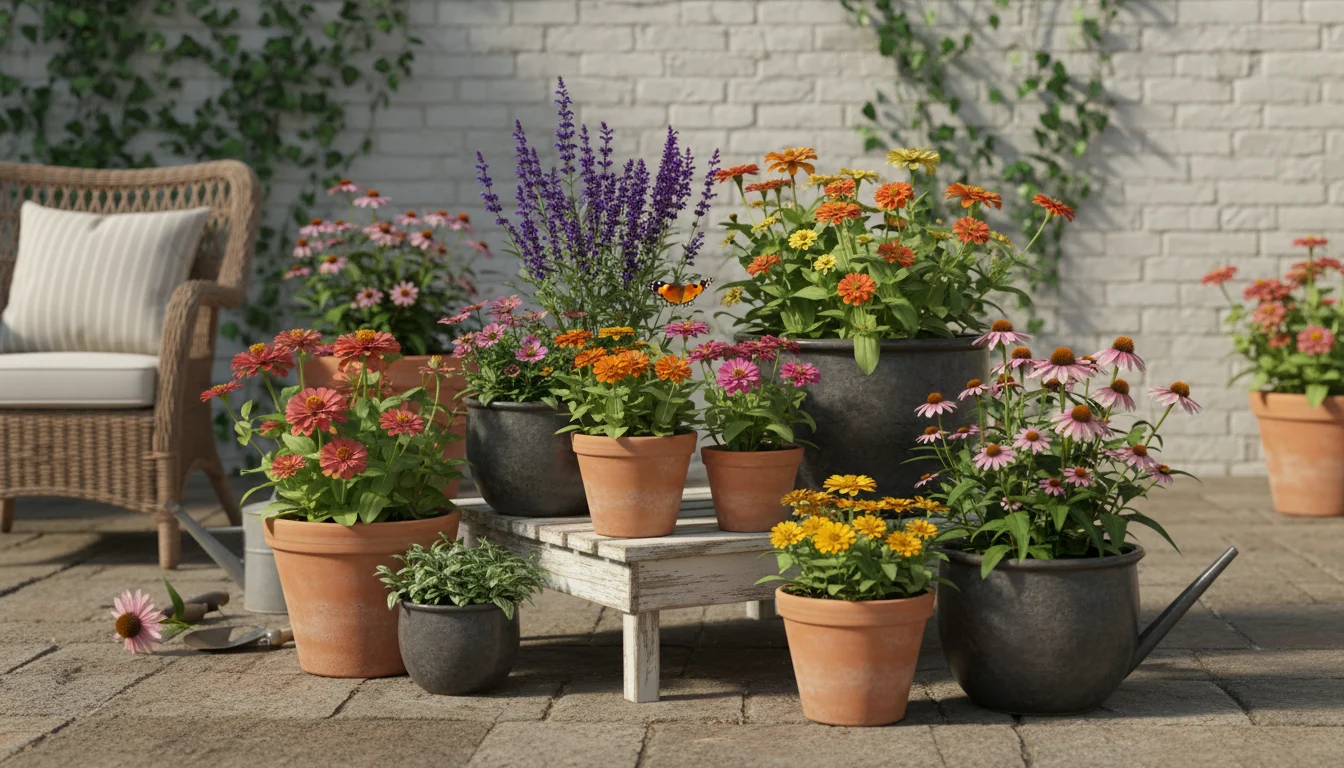
Top Nectar Plants for Small Spaces
Many fantastic options thrive in containers and compact beds. Here are some reliable choices:
| Plant Name | Key Features for Butterflies | Care Notes for Small Spaces |
|---|---|---|
| Coneflower (Echinacea purpurea) | Provides a large landing pad; long bloom time; attracts many butterfly species. | Full sun, well-draining soil. Drought-tolerant once established. Can get tall; choose compact varieties. |
| Salvia (Salvia spp.) | Tubular flowers loved by butterflies; wide range of colors and bloom times. | Full sun. Many varieties are compact and drought-tolerant. Deadhead for continuous blooms. |
| Zinnia (Zinnia elegans) | Bright, daisy-like flowers; abundant nectar. Choose single-petal varieties over double for easier access. | Full sun, good air circulation. Heat and drought tolerant. Great for containers. |
| Lantana (Lantana camara) | Clusters of small, colorful flowers; attracts many butterfly species. | Full sun. Tolerates heat and drought. Can be grown as an annual or perennial depending on climate. Check if invasive in your area. |
| Penta (Pentas lanceolata) | Star-shaped clusters of flowers; a butterfly magnet, especially in warmer climates. | Full sun to partial shade. Blooms continuously. Great for containers and hanging baskets. |
| Cosmos (Cosmos bipinnatus) | Simple, open flowers; easy to grow from seed; provides continuous blooms. | Full sun. Tolerates poor soil. Many compact varieties available. |
| Bee Balm (Monarda didyma) | Unique tubular flowers; especially attractive to long-tongued butterflies. | Full sun to partial shade. Prefers moist soil. Good for a native, pollinator friendly garden. |
When you integrate these `butterfly plants` into your compact yard or balcony, you immediately increase its appeal to local butterfly populations, transforming it into an active feeding ground.
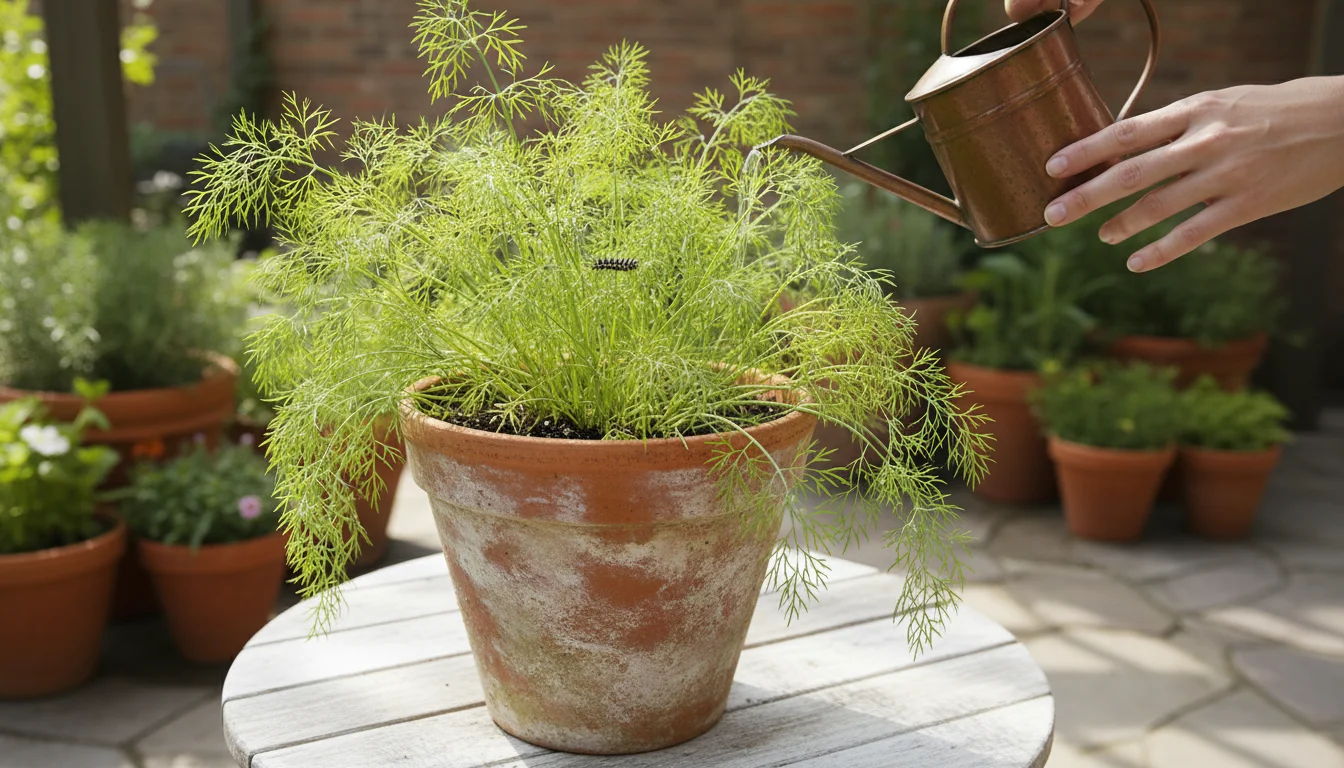
Beyond Nectar: Essential Host Plants for Butterfly Larvae
Attracting adult butterflies is only half the mission. To truly support their entire life cycle and ensure future generations, you must also provide host plants for their caterpillars. This is a critical component of any effective `pollinator friendly garden`.
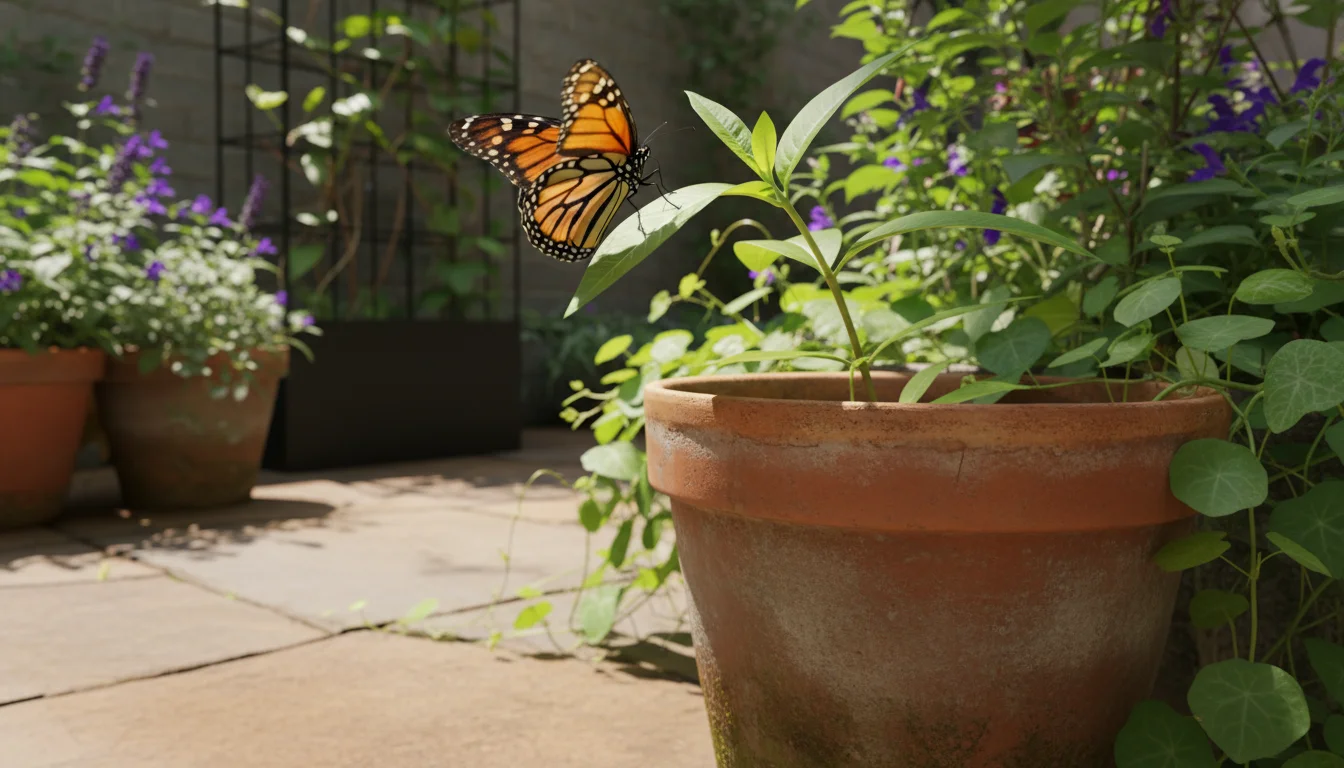
Understanding Host Plant Specificity
Most butterfly species are highly selective about their host plants. A female butterfly will only lay her eggs on the specific plant species that her caterpillars can eat. If those plants are absent, she moves on, and that butterfly population cannot reproduce in your garden. This biological imperative underscores the importance of including host plants in your design.
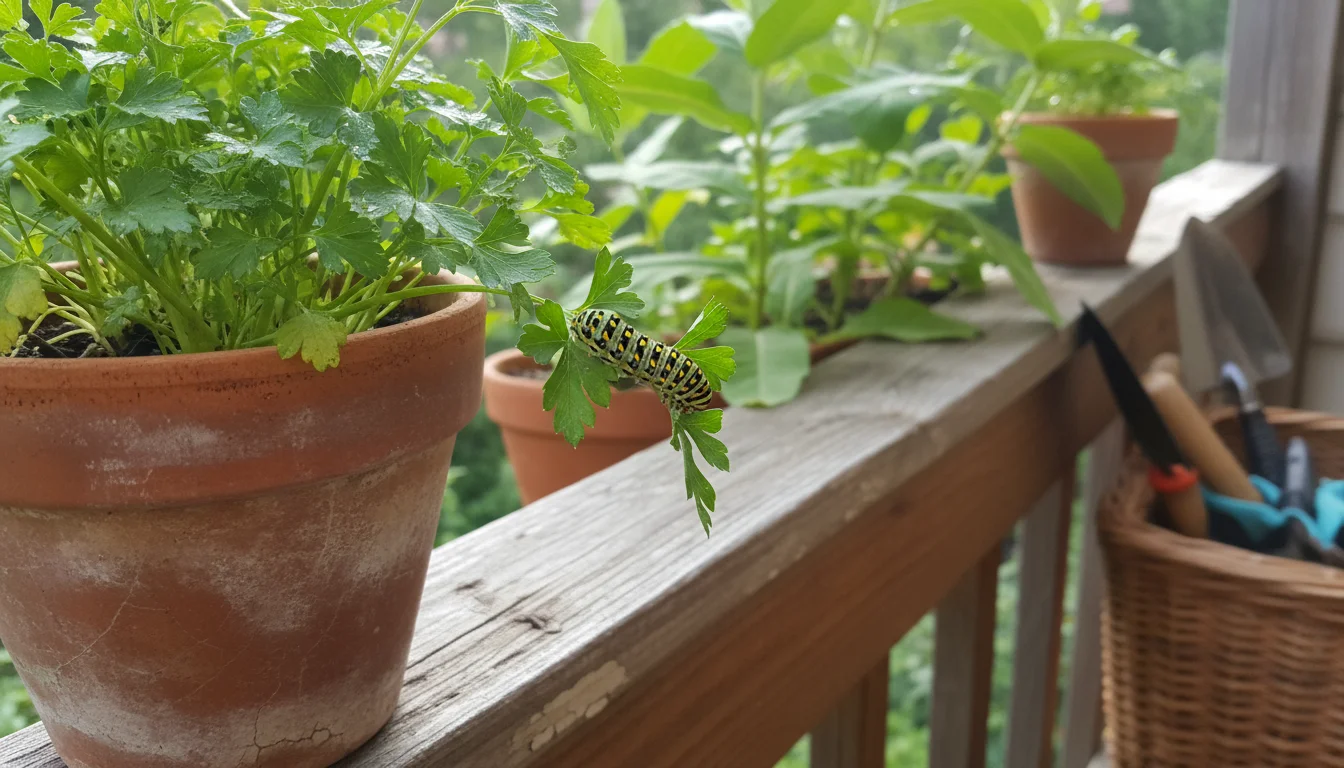
Common Host Plants for Your Small Space
Identifying common butterfly species in your region helps you select appropriate host plants. Research local native butterfly species to maximize your impact. Here are some widely recognized host plants that can often be integrated into `small space gardening`:
- Milkweed (Asclepias spp.): Absolutely essential for Monarch butterflies. Plant common milkweed, swamp milkweed, or butterfly weed. Ensure you plant native milkweed varieties specific to your region. For instance, common milkweed (Asclepias syriaca) thrives in many eastern and central North American regions, while desert milkweed (Asclepias subulata) suits arid western areas.
- Parsley, Dill, Fennel (Apiaceae family): These culinary herbs double as host plants for Black Swallowtail caterpillars. You can grow them in containers and enjoy their culinary benefits while supporting butterflies.
- Bronze Fennel (Foeniculum vulgare ‘Purpureum’): A beautiful ornamental herb that also serves as a host for Black Swallowtails. Its feathery foliage adds texture to your garden.
- Rue (Ruta graveolens): Another host plant for Black Swallowtail caterpillars. Handle with care, as sap can cause skin irritation in some individuals.
- Violets (Viola spp.): Host plants for Fritillary butterflies. Many violets are low-growing and can be tucked into small garden beds or containers.
- Passionflower (Passiflora spp.): Host plant for Gulf Fritillary and Zebra Longwing butterflies. Its striking flowers also provide nectar. Many varieties are vining and can be grown on trellises, ideal for vertical `small space gardening`.
- Willows, Poplars, Aspens (Salix, Populus spp.): While many species are large trees, smaller willow shrubs exist that host Mourning Cloak butterflies. Consider dwarf varieties if space allows.
When incorporating host plants, anticipate that caterpillars will munch on the leaves. This is a sign of success, not a problem. Embrace the nibbled leaves as proof your garden provides true sanctuary for butterflies.
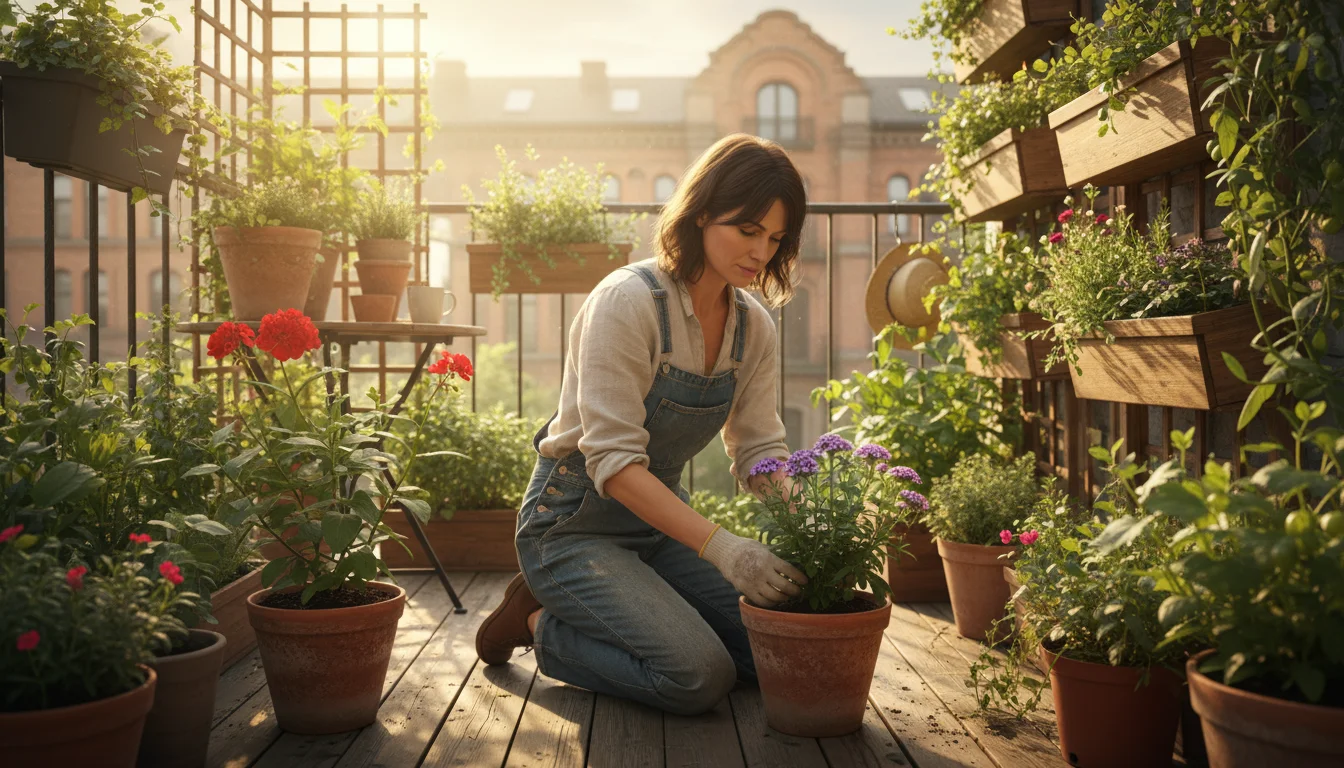
Designing Your Small Space Butterfly Oasis
Creating a butterfly haven in a compact area requires thoughtful design. You want to maximize space, provide necessary resources, and create an appealing aesthetic. `Small space gardening` techniques make this entirely achievable.
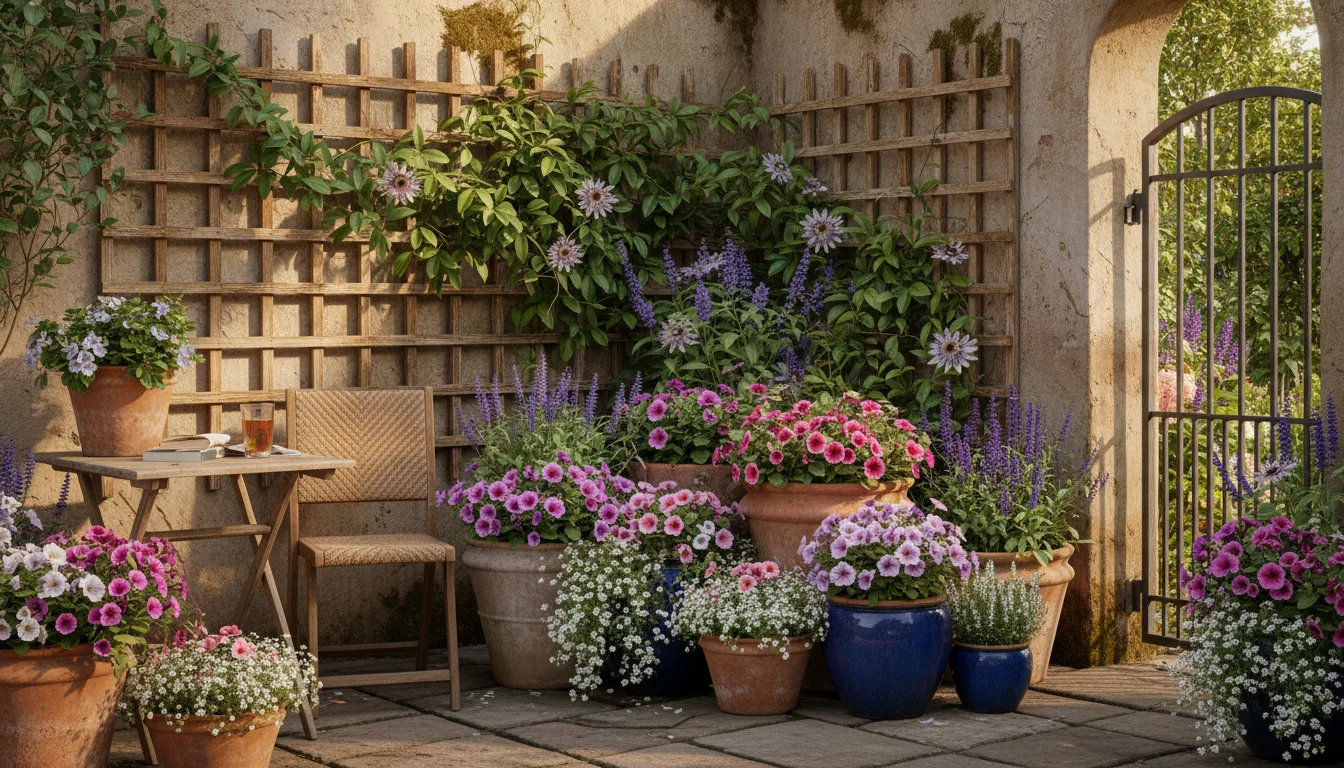
Strategic Layout for Maximum Impact
- Vertical Gardening: Utilize vertical space with trellises, hanging baskets, and wall planters. Vining host plants like passionflower or nectar plants like petunias can climb upwards, saving precious ground space.
- Container Grouping: Cluster containers to create a larger visual impact and a more substantial patch of color, making your garden more visible to butterflies. Grouping also helps maintain humidity and makes watering more efficient.
- Layering Plants: Use plants of different heights. Taller plants in the back or center of a container, with medium-sized plants and low-growing ground covers or trailing plants around the edges. This creates depth and offers varied shelter.
- Sun and Shelter: Identify areas in your small space that receive at least 6 hours of direct sunlight daily for nectar plants. Also, consider areas that offer some protection from strong winds, perhaps near a wall or a dense shrub, where butterflies can rest.
- Puddling Station Integration: Place a shallow dish filled with sand and water in a sunny, accessible spot. This provides essential minerals for butterflies without occupying much space.
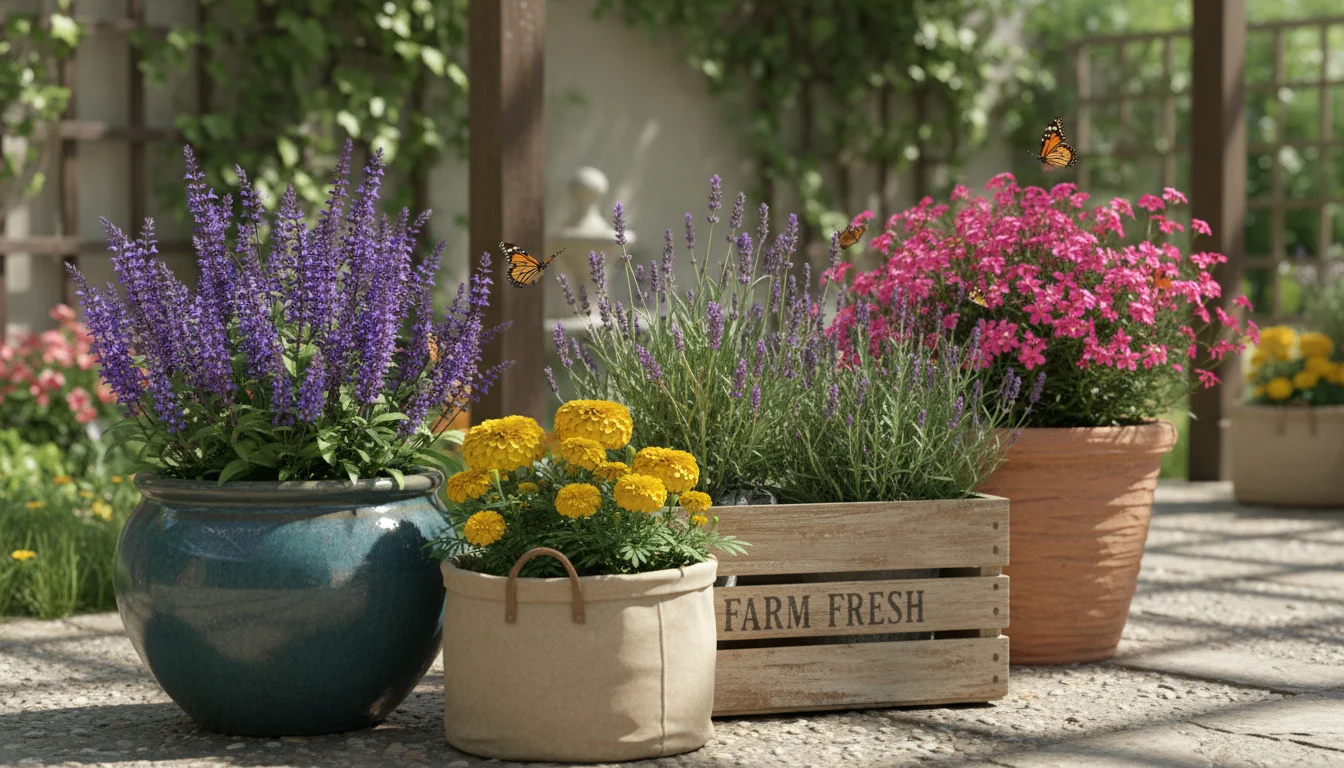
Choosing the Right Containers and Materials
Your container choices impact plant health and visual appeal. Opt for larger containers whenever possible, as they retain moisture longer and provide more room for root growth, reducing watering frequency. Terracotta pots look attractive but dry out quickly; plastic or glazed ceramic pots hold moisture better. Ensure all containers have drainage holes.
Consider upcycling materials for your containers. Old tires (check for leaching), repurposed wooden crates, or even sturdy fabric grow bags offer sustainable and economical choices. If using wood, opt for FSC-certified wood, ensuring it comes from sustainably managed forests. For plastic containers, look for those made from recycled materials.
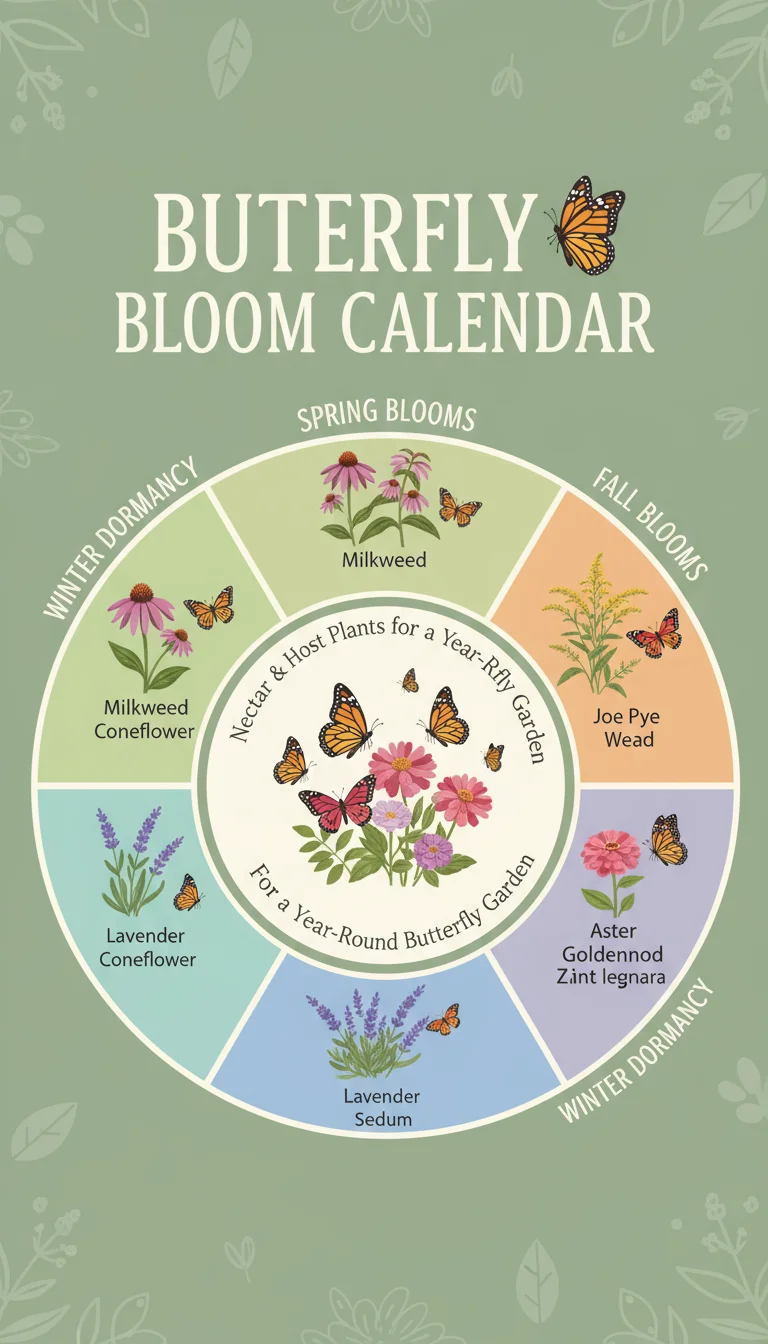
Planning for continuous blooms throughout the year is crucial for a successful `pollinator friendly garden`. Different butterfly species emerge and are active at various times, so a staggered bloom schedule ensures there is always a food source available. This thoughtful design element greatly enhances your garden’s effectiveness.
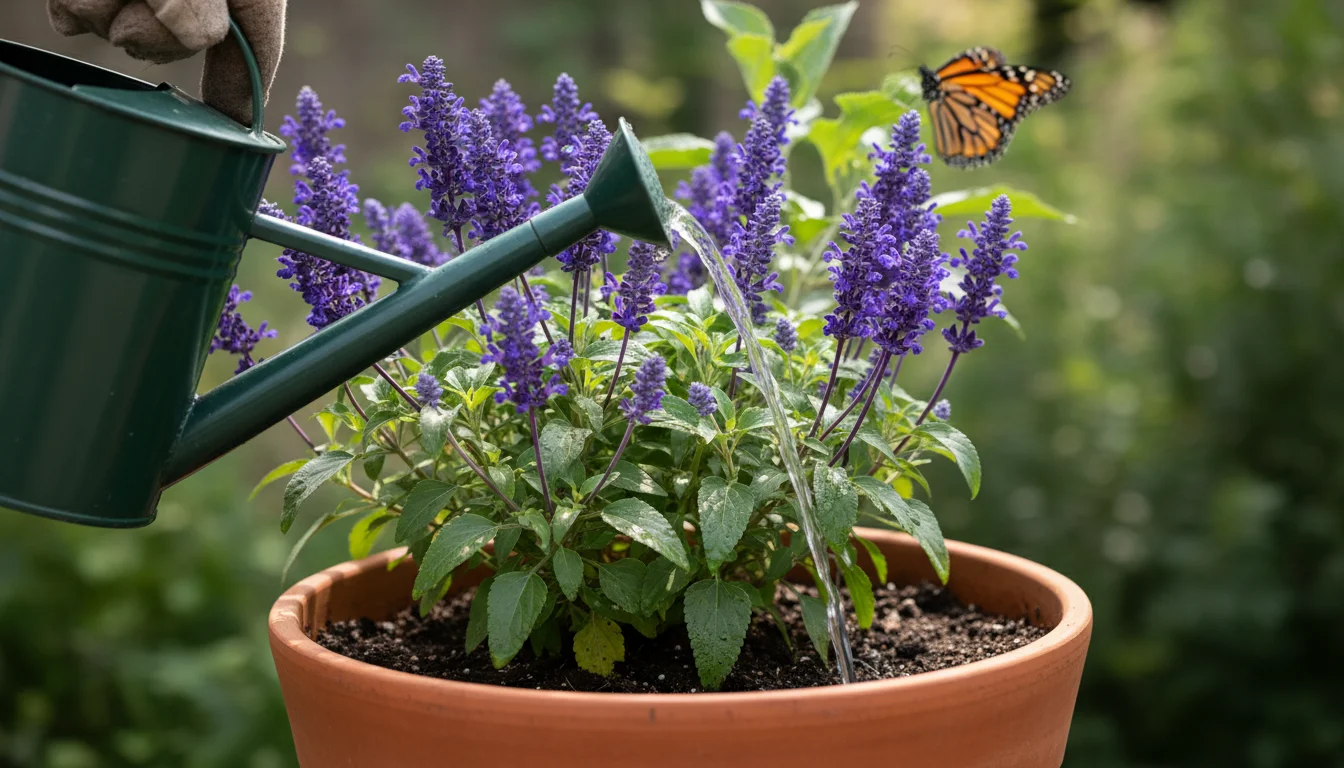
Water-Wise Habits for a Thriving Pollinator Garden
Water is a precious resource, and efficient watering practices are fundamental to sustainable `small space gardening`. You can keep your `butterfly plants` healthy and vibrant while minimizing water waste, directly benefiting both your garden and the environment.
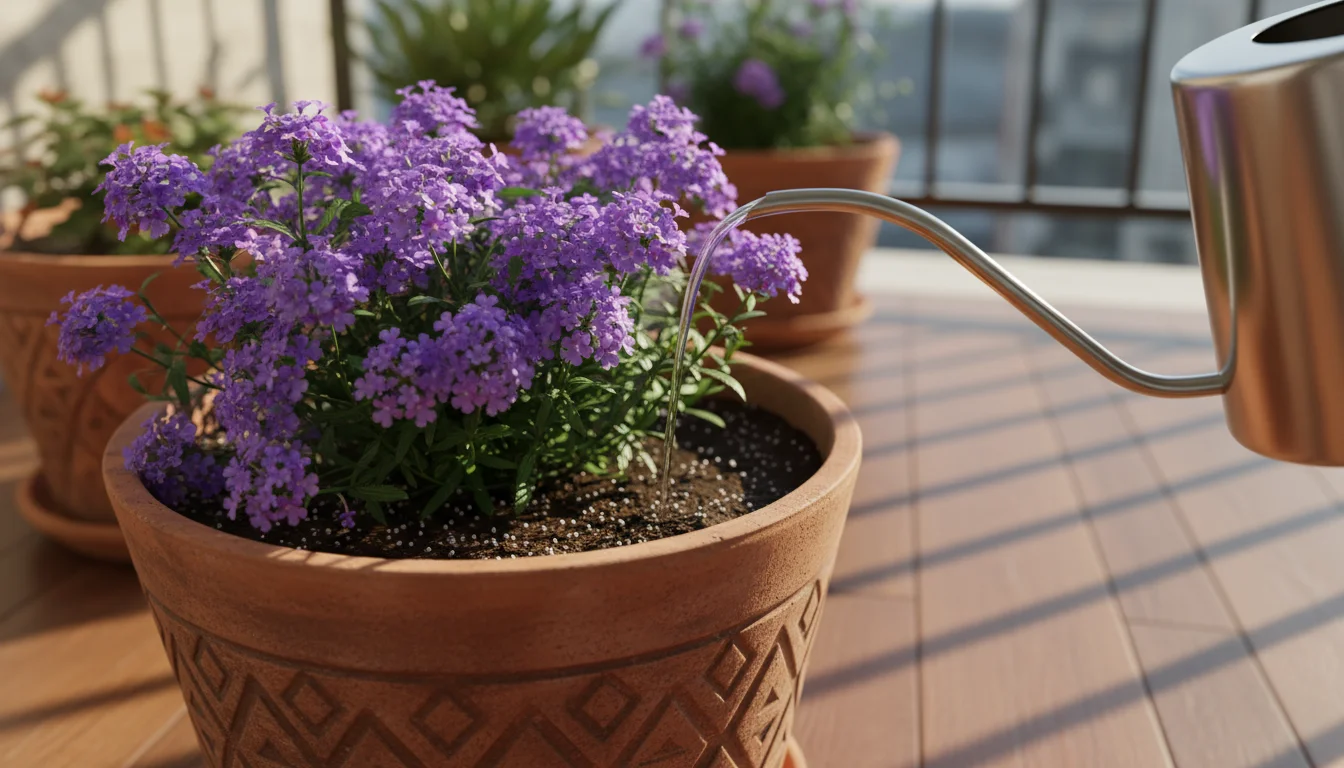
Efficient Watering Techniques
- Deep, Infrequent Watering: Instead of frequent shallow watering, water deeply. This encourages roots to grow deeper, making plants more resilient to dry spells. Check soil moisture by sticking your finger about an inch or two into the soil; if it feels dry, it is time to water.
- Morning Watering: Water early in the morning. This allows the water to soak in before the heat of the day causes excessive evaporation. It also gives foliage time to dry, reducing the risk of fungal diseases.
- Targeted Watering: Apply water directly to the plant’s root zone, rather than spraying the foliage. This reduces waste and ensures the water reaches where it is needed most. Drip irrigation or soaker hoses are excellent for this, even in small setups, but a simple watering can works effectively for containers.
- Self-Watering Containers: Utilize self-watering containers, which have a reservoir that gradually wicks water up to the soil. These reduce watering frequency significantly, ideal for busy gardeners or those with limited mobility.
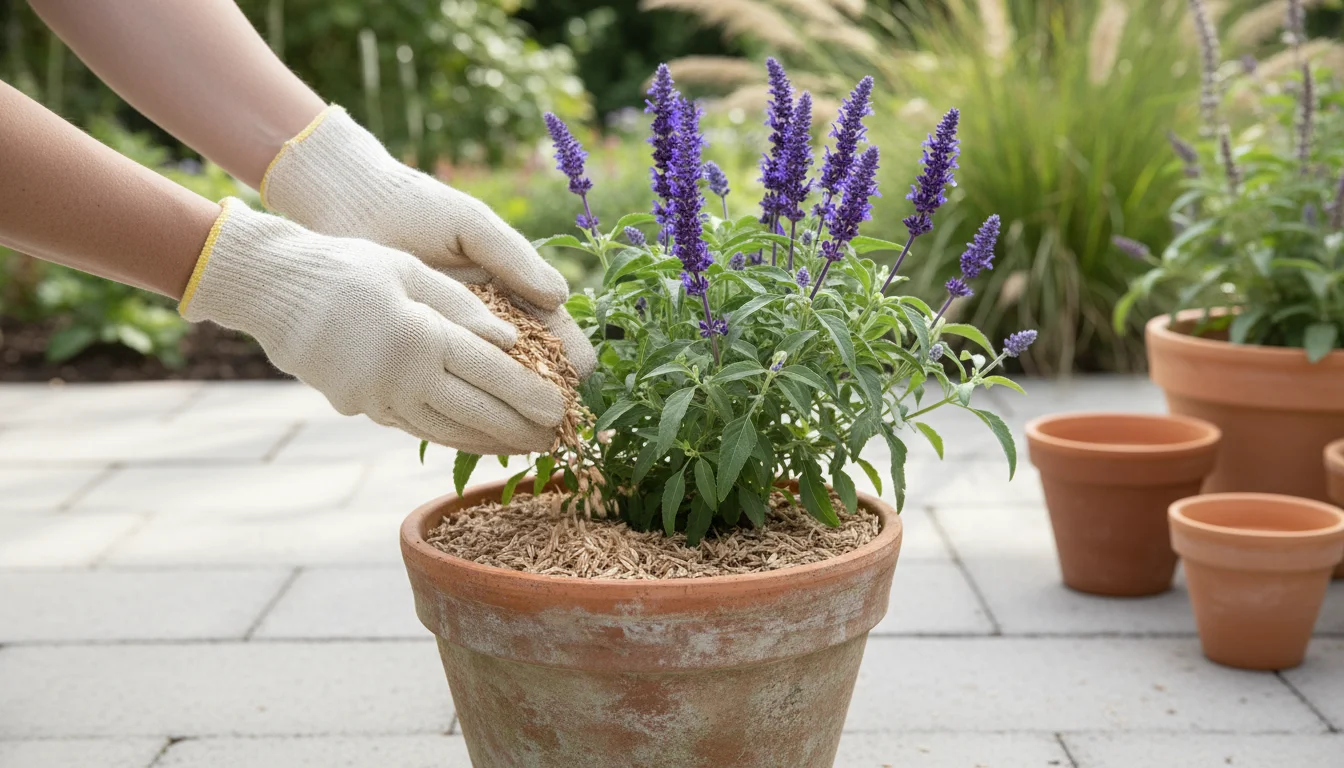
The Power of Mulch
Mulch is your best friend for water conservation in any garden, especially in containers. A 1-2 inch layer of organic mulch, such as wood chips, shredded leaves, or straw, offers numerous benefits:
- Reduces Evaporation: Mulch acts as a barrier, slowing down the rate at which water evaporates from the soil surface. This means you water less frequently.
- Regulates Soil Temperature: It keeps soil cooler in summer and warmer in winter, providing a more stable environment for plant roots.
- Suppresses Weeds: Mulch blocks sunlight, preventing weed seeds from germinating. Fewer weeds mean less competition for water and nutrients.
- Enriches Soil: Organic mulches break down over time, adding valuable organic matter and nutrients to your potting mix or garden soil, improving its structure and fertility.
Apply mulch to your containers and garden beds, keeping it a few inches away from plant stems to prevent rot.
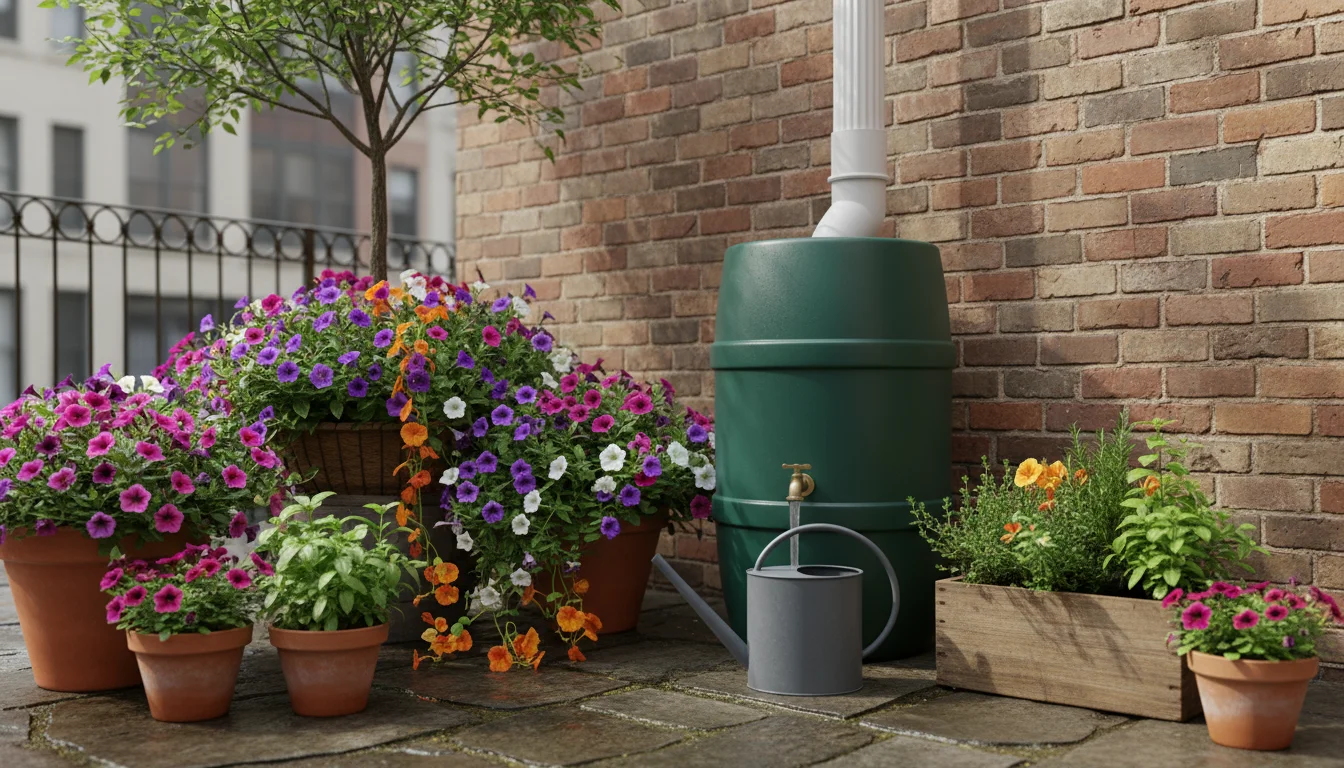
Rain Capture for Small Spaces
Even in a small space, you can implement basic rain capture. A small rain barrel or even just placing buckets under a gutter downspout can collect surprisingly large amounts of water. Rainwater is free, unchlorinated, and excellent for plants. Ensure any rain capture system is securely installed and check local regulations, as some areas have restrictions on rain harvesting.
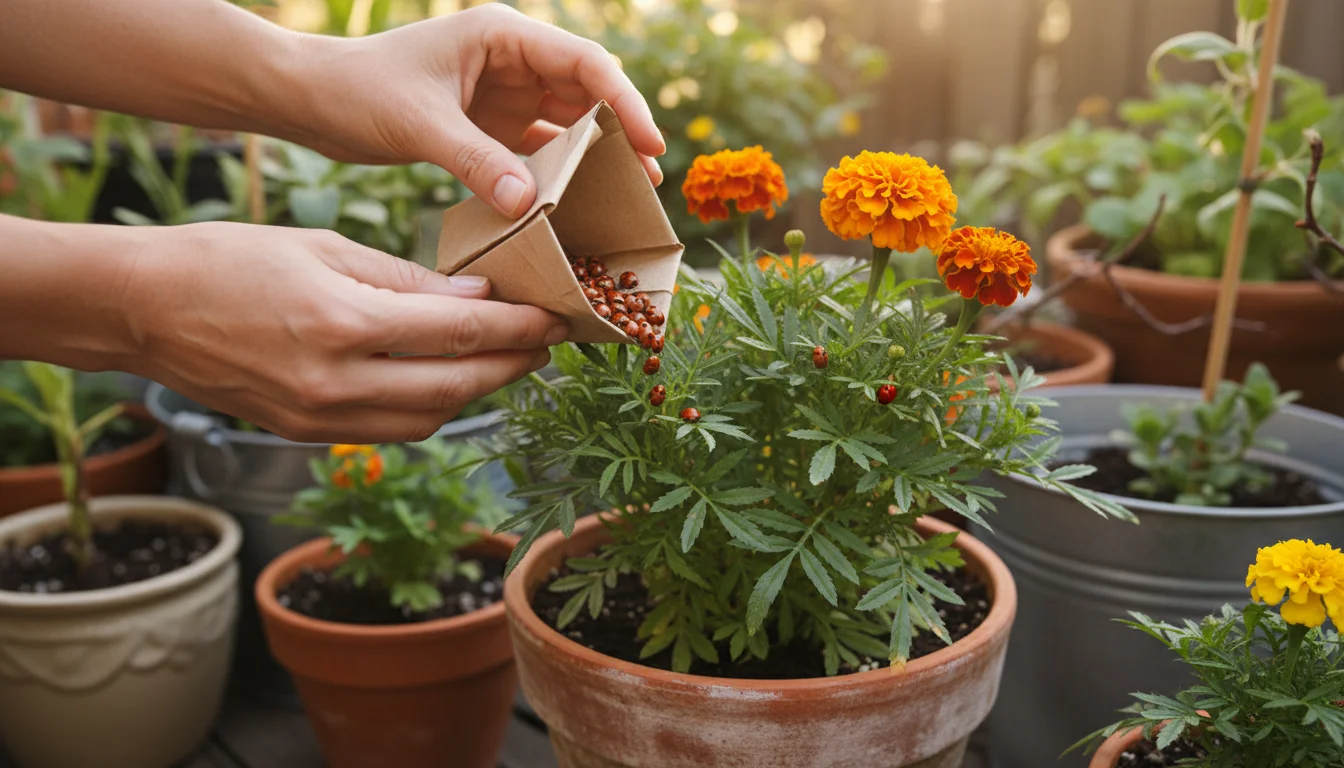
Safe Pest Management: Protecting Your Pollinators
For a truly `pollinator friendly garden`, safe pest management is non-negotiable. Chemical pesticides, even those marketed for garden use, can be lethal to butterflies and other beneficial insects, often with long-lasting residual effects. Embrace Integrated Pest Management (IPM), a holistic approach that prioritizes prevention and non-toxic solutions.
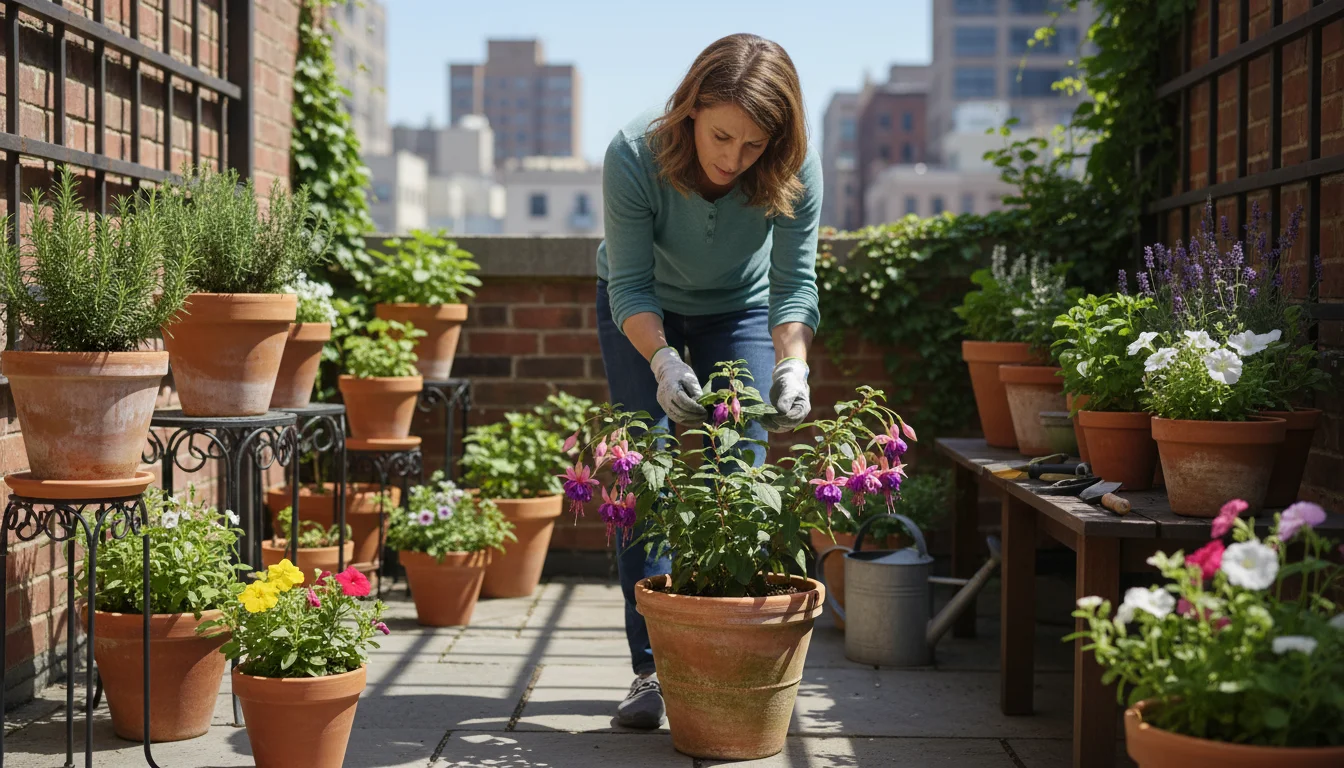
Principles of Integrated Pest Management (IPM)
- Prevention:
- Healthy Plants: Strong, healthy plants are less susceptible to pests. Provide adequate sunlight, water, and nutrients.
- Right Plant, Right Place: Choose plants well-suited to your local climate and conditions. Stressed plants attract pests.
- Good Air Circulation: Space plants appropriately to allow air to flow, reducing humidity and fungal issues.
- Inspect New Plants: Before adding new plants to your garden, inspect them thoroughly for any signs of pests or disease. Isolate them if you see anything suspicious.
- Monitoring:
- Regular Checks: Routinely inspect your plants for early signs of pests. Look on the undersides of leaves, stems, and new growth.
- Learn to Identify: Understand which insects are harmful pests and which are beneficial predators (like ladybugs or lacewings) or simply part of the ecosystem (like caterpillars on their host plants).
- Mechanical and Cultural Controls:
- Hand-Picking: For larger pests like slugs or caterpillars (if not on a host plant), physically remove them.
- Strong Water Spray: A direct spray of water can dislodge aphids, spider mites, and other small insects.
- Pruning: Remove heavily infested plant parts.
- Companion Planting: Some plants deter pests naturally or attract beneficial insects. For example, marigolds can deter nematodes.
- Least-Toxic Options (Last Resort):
- Insecticidal Soaps: These work by smothering soft-bodied insects. They have low residual effect but require direct contact with the pest.
- Horticultural Oils: Similar to insecticidal soaps, these suffocate pests. Use them carefully according to label instructions.
- Neem Oil: A botanical insecticide that disrupts insect growth and feeding. It generally has a low impact on beneficial insects once dry, but avoid spraying when pollinators are active.
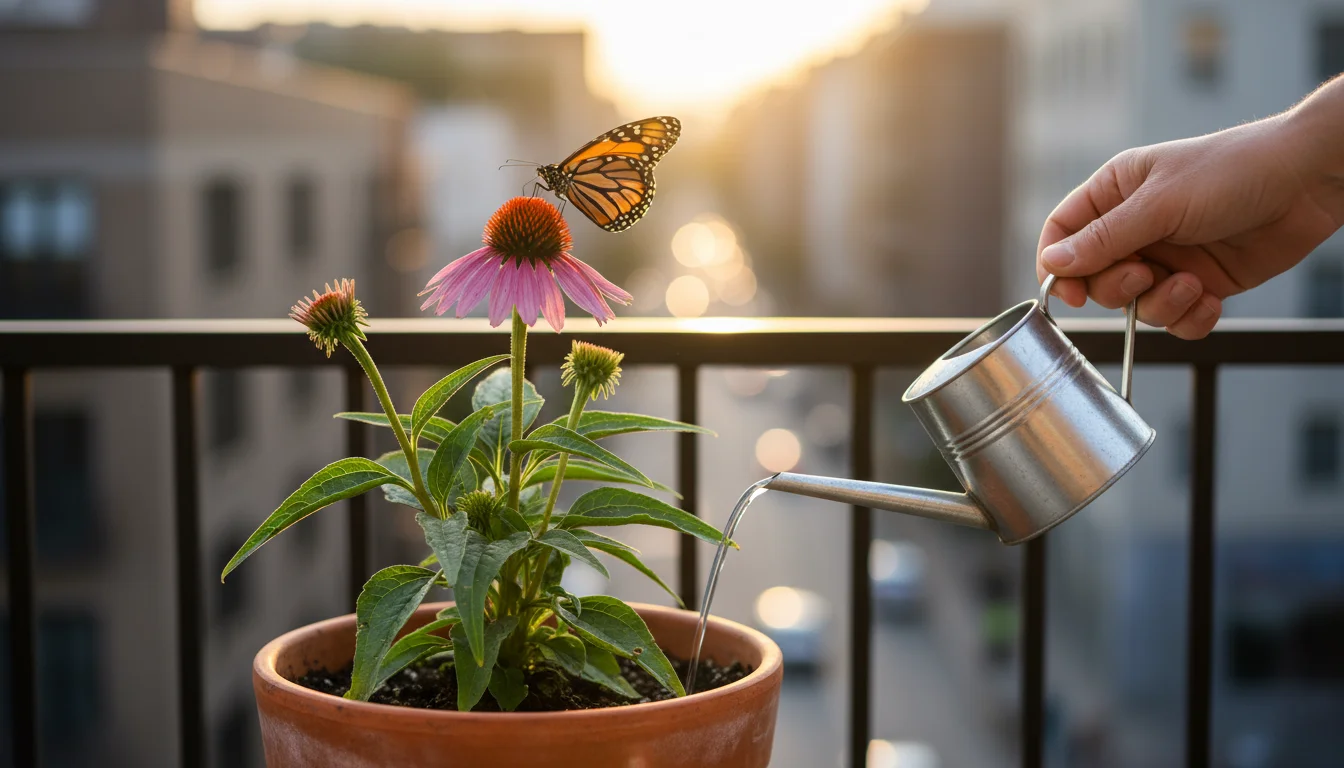
Crucial Considerations for Pollinator Safety
Never spray any pesticide, even organic ones, when butterflies, bees, or other beneficial insects are active on your plants. Apply treatments in the early morning or late evening when pollinators are least active. Remember that the goal of a butterfly garden is to encourage insect life, not eradicate it. Embrace a philosophy of tolerance for minor damage, understanding that a few chewed leaves signify a healthy, functioning ecosystem where life cycles are unfolding naturally.
When purchasing `butterfly plants`, specifically ask if they have been treated with systemic pesticides, such as neonicotinoids. These chemicals are absorbed by the plant and become present in its pollen and nectar, making them toxic to any insect feeding on them for an extended period, even months after application. Opt for plants guaranteed pesticide-free to ensure you provide a safe haven for pollinators.
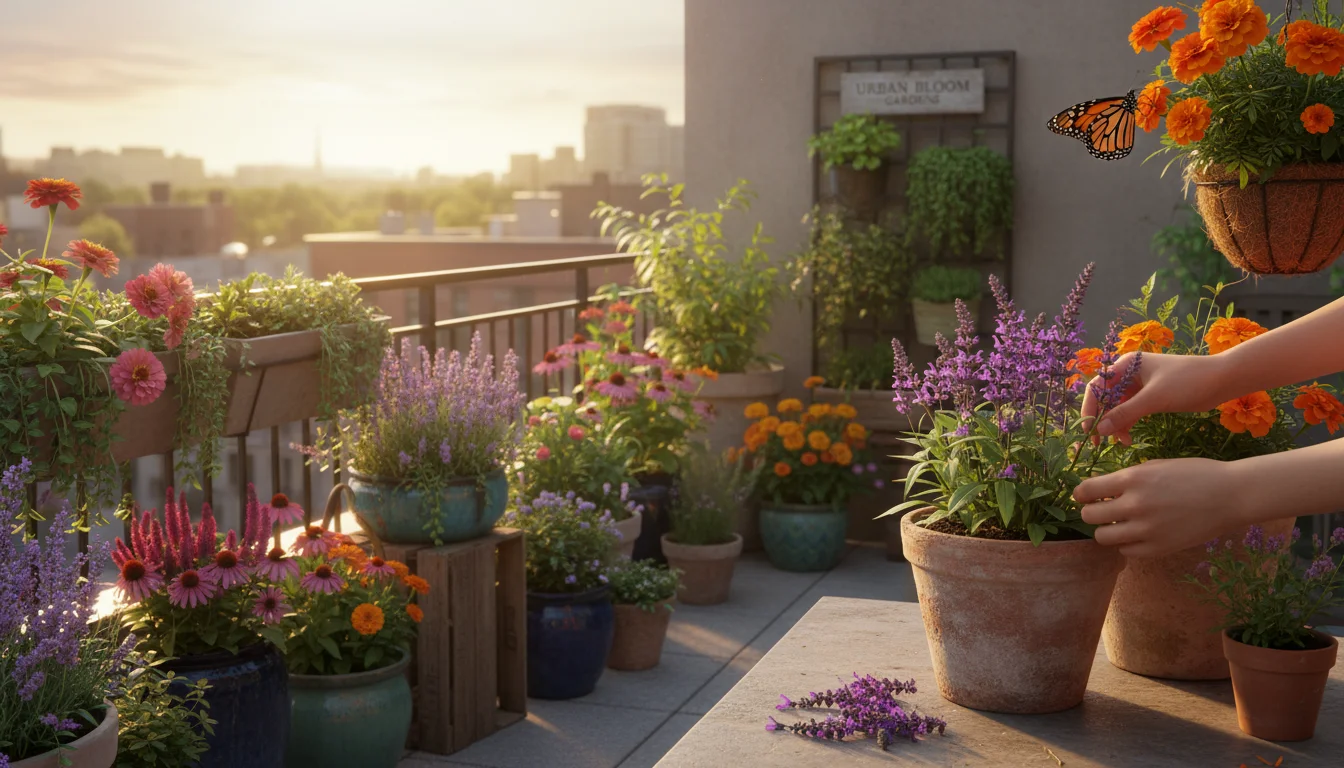
Nurturing a Pollinator Friendly Garden: Year-Round Care
A thriving `pollinator friendly garden` requires ongoing care that extends beyond initial planting. Implementing sustainable practices throughout the seasons ensures your small space remains a welcoming and resource-rich environment for butterflies.
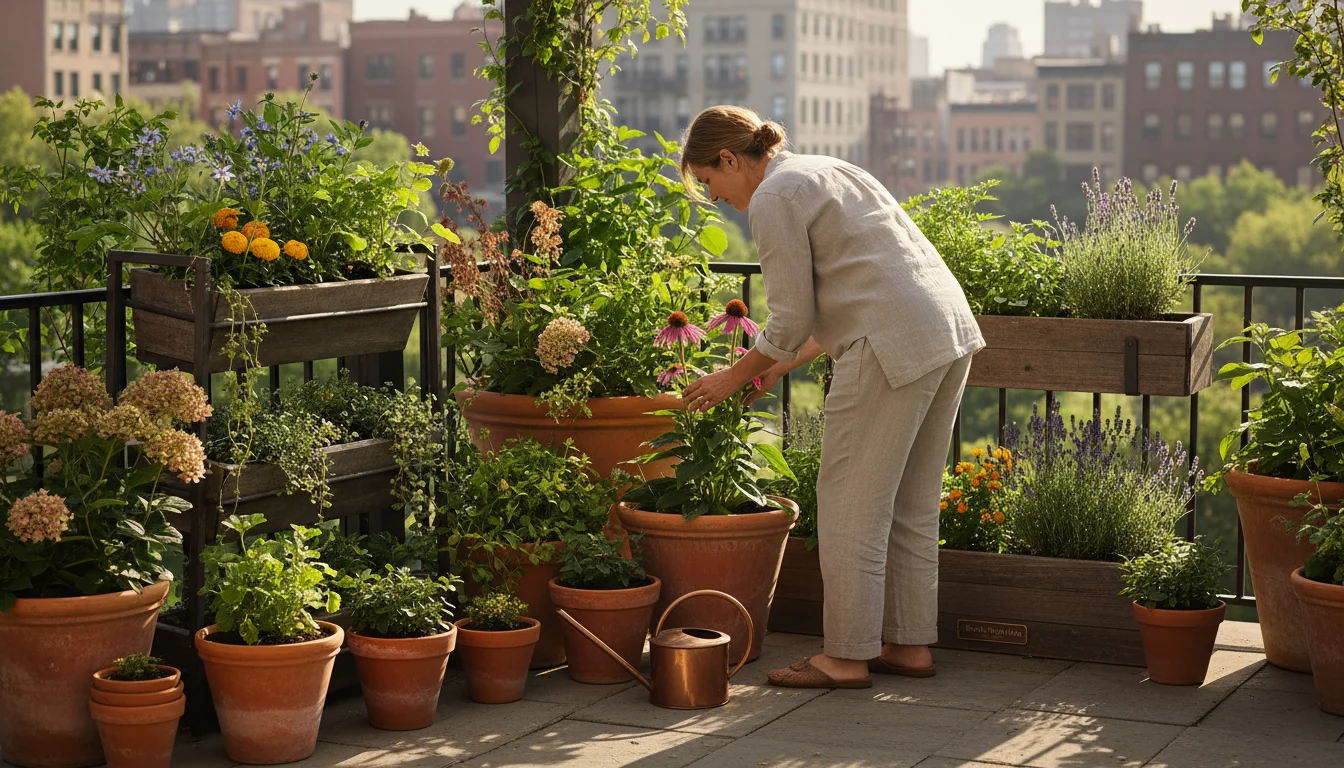
Seasonal Maintenance for Continuous Support
- Spring Awakening: As temperatures rise, begin by gently clearing any overwintered debris. Many butterfly species overwinter as eggs, caterpillars, or chrysalises in leaf litter or on plant stems. Avoid over-tidying too early. Allow ground cover and old stems to remain until consistent warm weather arrives, protecting these dormant stages. Assess existing `butterfly plants` for health and plan for new additions, prioritizing native varieties.
- Summer Blooms: This is peak season for butterflies. Maintain consistent watering, especially for container plants, and deadhead spent flowers on nectar plants (unless they are host plants or you want them to go to seed) to encourage new blooms. Continue monitoring for pests, employing safe, non-toxic methods.
- Fall Preparations: As the weather cools, select plants that offer late-season nectar, such as asters and goldenrod, to support migrating butterflies and those preparing for winter. Allow some plants to go to seed, providing food for birds and structure for overwintering insects. Resist the urge to aggressively “clean up” your garden; fallen leaves and dried plant stalks offer crucial shelter.
- Winter Dormancy: Your small space garden might appear quiet, but life persists. Leave dried stems and seed heads as natural insulation and potential overwintering sites. Protect tender perennials in containers by moving them to a sheltered location or insulating their pots. A layer of straw or burlap around containers helps guard roots against extreme cold.
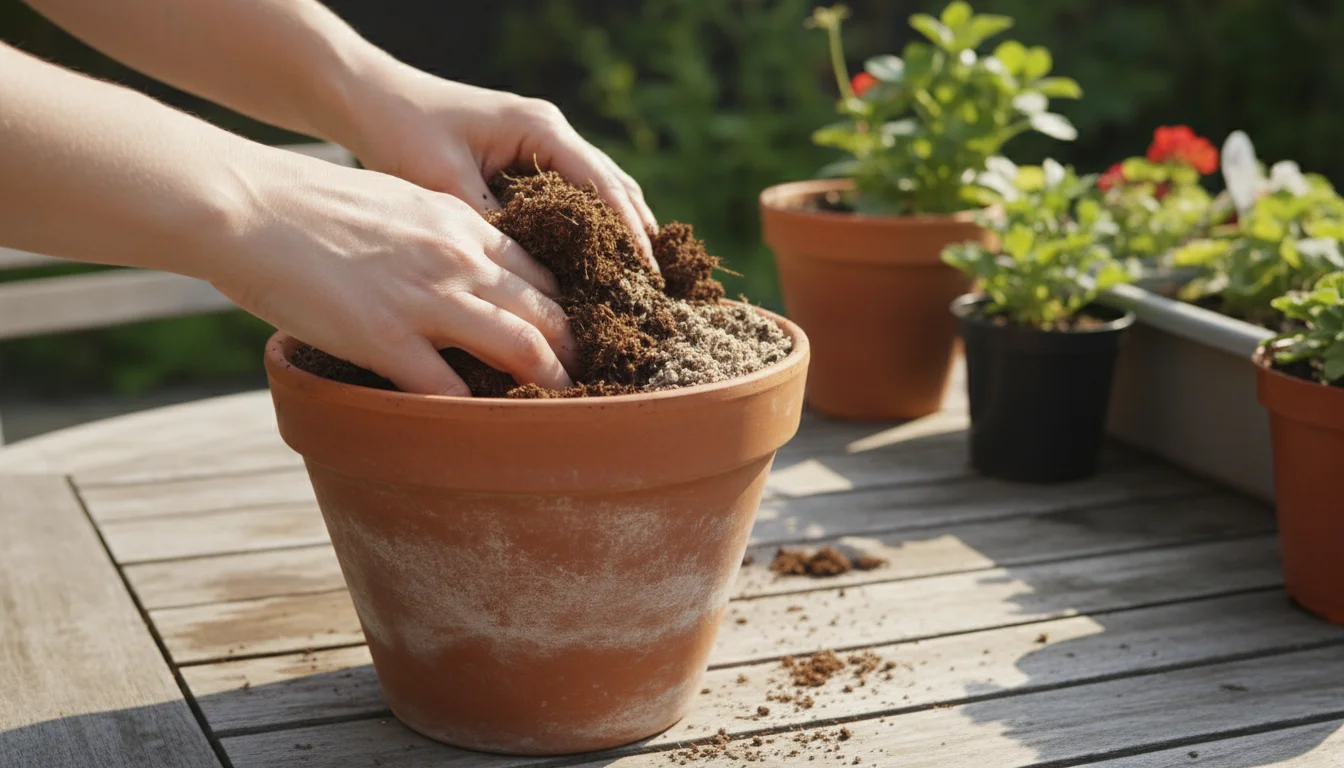
Enhancing Soil Health in Containers
Container gardening demands particular attention to soil health because plants rely entirely on the potting mix you provide. Over time, potting mix degrades, and nutrients deplete. You can maintain a vibrant environment:
- Use Peat-Free Potting Mix: Choose peat-free potting mixes to support environmental sustainability. Peat harvesting damages crucial wetlands. Peat-free alternatives often contain compost, coir, or other sustainable materials. These mixes also tend to have better drainage and aeration.
- Amend with Organic Matter: Regularly incorporate compost or worm castings into your potting mix. These amendments slowly release nutrients, improve soil structure, and foster a healthy microbial community, which is vital for nutrient uptake by plants.
- Slow-Release Organic Fertilizers: Instead of synthetic, fast-acting fertilizers, use slow-release organic granular fertilizers. These provide a steady supply of nutrients without the risk of over-fertilization or nutrient runoff. They also promote beneficial soil microbes.
- Avoid Salt Buildup: Over time, mineral salts from tap water and fertilizers can accumulate in container soil. Flush pots periodically by watering thoroughly until water drains freely from the bottom for an extended period. This helps leach out excess salts.
By actively nurturing your soil, you create a stronger foundation for your `butterfly plants` and ensure they can continuously provide the resources butterflies need.
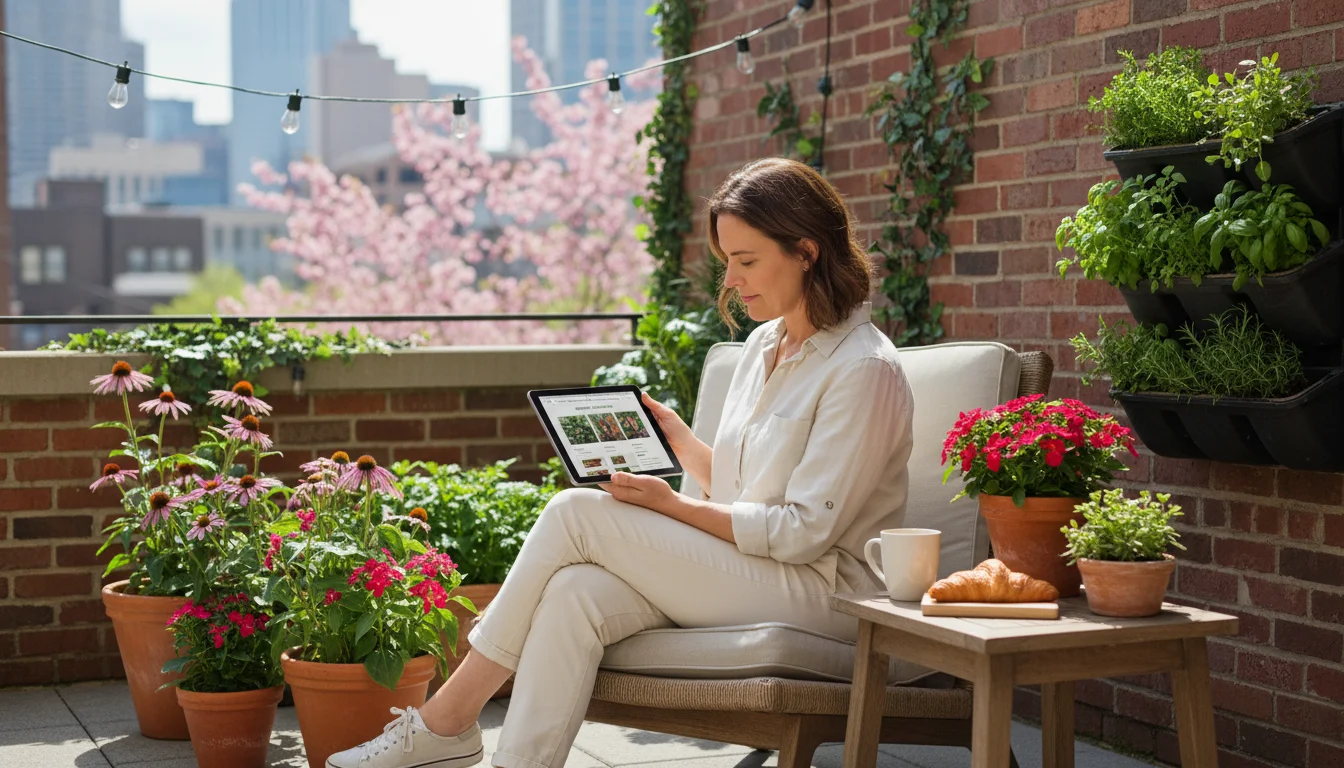
Frequently Asked Questions
Can I really attract butterflies to a small balcony?
Absolutely. Butterflies primarily seek food (nectar and host plants), water, and shelter. Even a few well-chosen containers with butterfly plants can provide these essential resources. Focus on density, continuous blooms, and specific host plants to maximize your appeal. Vertical gardening and grouping pots also enhance visibility for butterflies.
How do I know which butterfly plants are native to my area?
Consult local resources such as university extension offices, native plant societies, botanical gardens, or reputable native plant nurseries. Websites like the Xerces Society or the Pollinator Partnership offer regional guides. Providing your address to online native plant finders can also generate a tailored list of appropriate `butterfly plants` for your specific location.
What is the most important thing to remember for a pollinator friendly garden?
Avoid all synthetic pesticides. Even a tiny amount of pesticide residue can harm or kill butterflies and their larvae. Prioritize native plants, provide both nectar and host plants, and observe your garden regularly for natural solutions to any challenges. Embrace the idea that a truly `pollinator friendly garden` welcomes all stages of insect life.
My host plants are getting eaten by caterpillars. Is this a problem?
No, this is a sign of success. The purpose of a host plant is to feed butterfly larvae. Caterpillars munching on leaves indicates that butterflies are using your garden for reproduction, which is the ultimate goal of creating a `pollinator friendly garden`. Resist the urge to remove them; they are the future butterflies of your garden.
How often should I water my butterfly plants in containers?
Watering frequency depends on various factors: plant type, container size, soil mix, and weather. Generally, check the soil moisture daily by feeling an inch or two deep. Water thoroughly until it drains from the bottom. Deeper, less frequent watering encourages stronger root systems. Incorporating mulch significantly reduces watering needs.
